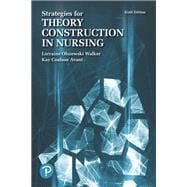For courses in nursing theory.
The clearest, most useful introduction to theory development methods
Strategies for Theory Construction in Nursing provides a straightforward, logically organized resource on theory development, from a nursing perspective. It places theory development in the context of both a rich history tracing back to the mid-¿20th century and of contemporary and emerging issues. Present¿-day coverage includes population- and domain-specific theories addressing the needs of diverse clients. Reflecting vast changes in nursing practice, the 7th edition covers advances both in theory development and in strategies for concept, statement, and theory development. It also builds further connections between nursing theory and evidence-based practice.










